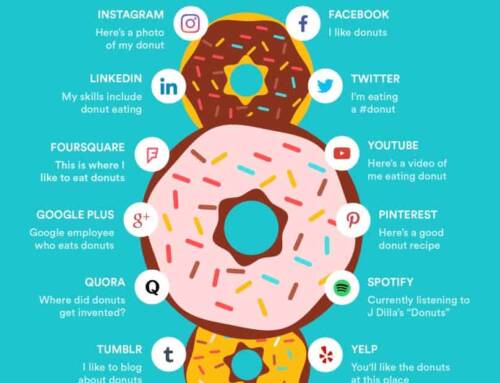
Google’s Mobile-First Index (& your SEO)
Maintaining separate “mobile” websites and “desktop” websites is a thing of the past! Thanks to the mobile-first index, desktop and mobile are now forever joined in Google’s eyes. Google’s mobile index is quickly becoming the primary index.
Companies must now optimize for mobile devices first – or allow their website to be buried at the bottom of hundreds of sites competing for their customers and their profits in Google’s search results. Yes, design an attractive website. But before that, design a site that is mobile-friendly and optimized for every device you can imagine: Galaxy S5, Nexus 5X, iPadPro and iPhone X, basically anything with a glass screen or LCD.
If you run a business site, here are 5 things you need to know about Google’s Mobile-First Index:
- Most customers find your first on mobile
The whole idea behind Google’s Mobile-First initiative is to align the way users find your site with how it is built in the first place. People are already using smaller devices more often than desktops, so websites need to catch on!
“’Mobile optimized’ and ‘prioritizing mobile’ are consequences of the mobile-first mantra, not components of it. Mobile-First means the first experience new users will have with your product will be on a mobile phone.” – Julien Veneziano from Fueled
- User experience trumps quality content
In Google’s eyes, as of 2017, the #1 thing that will provide a good user experience is not the quality of content on a site but HOW that content is presented. If it reads well on both a projector screen and an iPad, then you’re going to pass Google’s test. If not, well, try again.
“If the sites in Google’s index aren’t mobile friendly, then a significant portion of their searchers don’t have a great experience. This is much like … going HTTPS. Though they might not technically be ranking factors, they do affect user experience which is very much a ranking factor.” – Chris Hornak, Owner of Blog Hands
- Responsiveness is essential, not optional
From embedded videos to surveys and the use of flexible grids and CSS media queries, websites that respond to user’s behavior will be ranked much higher than those that are made according to a template or the designer’s “vision” alone.
“If you haven’t already done so, create a responsive-design website, implement structured data in your mobile version, consider user experience and conversion optimization, and plan out your link building strategy.” – Sam Alexander, SEO Strategist from CThru Media
- Mobile-first means mobile-first SEO too
So, you’ve optimized your website for search engines. Your meta descriptions, heading tags and alt tags are in place. However, mobile pages will soon be indexed separately from desktop pages, so make sure your SEO plan includes a mobile-friendly user agent to tell you if your URLS and other elements line up from mobile to desktop.
“Even though Google announced that the mobile-first index is months away, mobile pages are being indexed separately from desktop. To make sure your SEO features exist across platforms, crawl your site with both a desktop and mobile user agent. I think the most important is Googlebot Mobile since Google owns the majority of the search market share, even though most crawlers give you the option to crawl with Bingbot Mobile too.” – Austin Bay, Independent SEO Consultant
- Beware of Pop-Up Penalties
Pop-ups on desktop are annoying, but often effective. Neil Patel, SEO guru and founder of HelloBar, uses them on his site. But you know where you won’t find them? On his mobile site. He has videos and strong CTA buttons, but no pop-ups.
“One big tip, do not use pop-ups on mobile versions. Pop-ups that cover the majority of a mobile screen immediately after a user lands on a page can earn a google penalty.” – Bradley Shaw, SEO Expert Brand Inc.
One of the first things we do with every client is ensure they have a quality site that is optimized for every device and every customer that wants to find them online. The cost of not having a mobile-friendly site is just too high. This is true whether you are a roof repairman or an e-learning development company.
No matter how tech savvy your customers are, getting on board with the mobile-first index will protect your bottom line. As a web design company, we take pride in both expert branding and expert optimization that keeps our clients up to speed in today’s digital marketplace.

Google’s Mobile-First Index (& your SEO)
Maintaining separate “mobile” websites and “desktop” websites is a thing of the past! Thanks to the mobile-first index, desktop and mobile are now forever joined in Google’s eyes. Google’s mobile index is quickly becoming the primary index.
Companies must now optimize for mobile devices first – or allow their website to be buried at the bottom of hundreds of sites competing for their customers and their profits in Google’s search results. Yes, design an attractive website. But before that, design a site that is mobile-friendly and optimized for every device you can imagine: Galaxy S5, Nexus 5X, iPadPro and iPhone X, basically anything with a glass screen or LCD.
If you run a business site, here are
5 things you need to know about Google’s Mobile-First Index:
- Most customers find your first on mobile
The whole idea behind Google’s Mobile-First initiative is to align the way users find your site with how it is built in the first place. People are already using smaller devices more often than desktops, so websites need to catch on!
“’Mobile optimized’ and ‘prioritizing mobile’ are consequences of the mobile-first mantra, not components of it. Mobile-First means the first experience new users will have with your product will be on a mobile phone.” – Julien Veneziano from Fueled
- User experience trumps quality content
In Google’s eyes, as of 2017, the #1 thing that will provide a good user experience is not the quality of content on a site but HOW that content is presented. If it reads well on both a projector screen and an iPad, then you’re going to pass Google’s test. If not, well, try again.
“If the sites in Google’s index aren’t mobile friendly, then a significant portion of their searchers don’t have a great experience. This is much like … going HTTPS. Though they might not technically be ranking factors, they do affect user experience which is very much a ranking factor.” – Chris Hornak, Owner of Blog Hands
- Responsiveness is essential, not optional
From embedded videos to surveys and the use of flexible grids and CSS media queries, websites that respond to user’s behavior will be ranked much higher than those that are made according to a template or the designer’s “vision” alone.
“If you haven’t already done so, create a responsive-design website, implement structured data in your mobile version, consider user experience and conversion optimization, and plan out your link building strategy.” – Sam Alexander, SEO Strategist from CThru Media
- Mobile-first means mobile-first SEO too
So, you’ve optimized your website for search engines. Your meta descriptions, heading tags and alt tags are in place. However, mobile pages will soon be indexed separately from desktop pages, so make sure your SEO plan includes a mobile-friendly user agent to tell you if your URLS and other elements line up from mobile to desktop.
“Even though Google announced that the mobile-first index is months away, mobile pages are being indexed separately from desktop. To make sure your SEO features exist across platforms, crawl your site with both a desktop and mobile user agent. I think the most important is Googlebot Mobile since Google owns the majority of the search market share, even though most crawlers give you the option to crawl with Bingbot Mobile too.” – Austin Bay, Independent SEO Consultant
- Beware of Pop-Up Penalties
Pop-ups on desktop are annoying, but often effective. Neil Patel, SEO guru and founder of HelloBar, uses them on his site. But you know where you won’t find them? On his mobile site. He has videos and strong CTA buttons, but no pop-ups.
“One big tip, do not use pop-ups on mobile versions. Pop-ups that cover the majority of a mobile screen immediately after a user lands on a page can earn a google penalty.” – Bradley Shaw, SEO Expert Brand Inc.
One of the first things we do with every client is ensure they have a quality site that is optimized for every device and every customer that wants to find them online. The cost of not having a mobile-friendly site is just too high. This is true whether you are a roof repairman or an e-learning development company.
No matter how tech savvy your customers are, getting on board with the mobile-first index will protect your bottom line. As a web design company, we take pride in both expert branding and expert optimization that keeps our clients up to speed in today’s digital marketplace.










